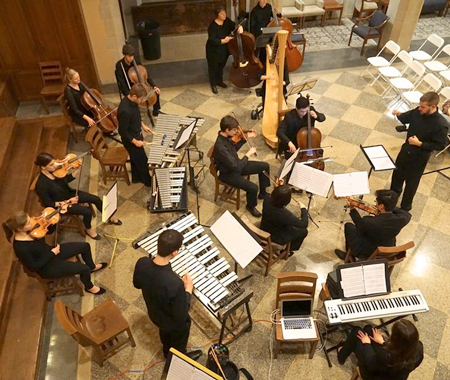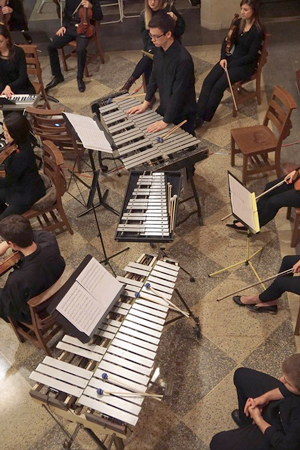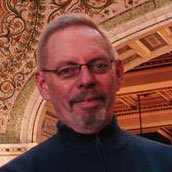by Daniel Hathaway

Adams, who won a Pulitzer for his Become Ocean, spent 36 years of his life contemplating the natural world in Alaska, the first decade while living in a primitive cabin (read a 2008 New Yorker profile by Alex Ross here). In the White Silence — in common with the work of poet John Haines, who had similar experiences in the vast, soundless Alaskan wilderness and whose poetry is referenced in the score — explores the unexpectedly wide range of colors huddled together at the whitest end of the spectrum, as well as the variety of sounds you can hear in silence when you train your ears to appreciate it.
Written in 1998 and scored for string orchestra, solo string quartet, celesta, two vibraphones, and harp, the work lasts about 80 minutes, although it feels like it could go on all week. Morton Feldman’s influence is strong here.
To Adams, white means diatonic, and he uses only the seven notes represented by the white notes on a keyboard in a variety of ways. Sometimes the whole string section plays static chords of mildly dissonant character against rising scales played at different tempos by the harp and vibraphones. Sometimes the texture thins out to solo string quartet, or to solo instruments (violin, viola, cello) in various combinations with the percussion instruments or harp.
About half an hour into the piece, you begin to sense a kind of structure: every five minutes or so, a brief moment of silence inserts a bookmark into the proceedings. Then the quiet relentlessness of C Major begins anew — or repeats something that might have happened before.

Ellis led his eighteen excellent players in a deeply concentrated performance, deftly cuing entrances and marking changes of meter — none of which seemed really to affect the progress of the musical material. The orchestra sounded warm and alluring in the hall’s live acoustic. The small but engaged audience applauded warmly at the end, though you suspected that not a few listeners wished in retrospect that they had opted to sit in the comfortable chairs and settees off to the side of Tucker Hall rather than on the folding chairs in the middle. Or maybe that they had brought a book or their knitting, or a yoga rug, so meditation-inspiring Adams’s music proved to be.
The piece can be heard in a live performance by Timothy Weiss and the Oberlin Contemporary Music Ensemble recorded in 2003, when Adams was teaching at the Oberlin Conservatory.
Earth and Air’s next program on Friday, April 8 at 7:30 pm, also at St. Paul’s, will feature early 20th-century English music by Frank Bridge, Edward Elgar, and Ralph Vaughan Williams.
Photos by Alex Belisle.

Published on ClevelandClassical.com February 8, 2016.
Click here for a printable copy of this article



